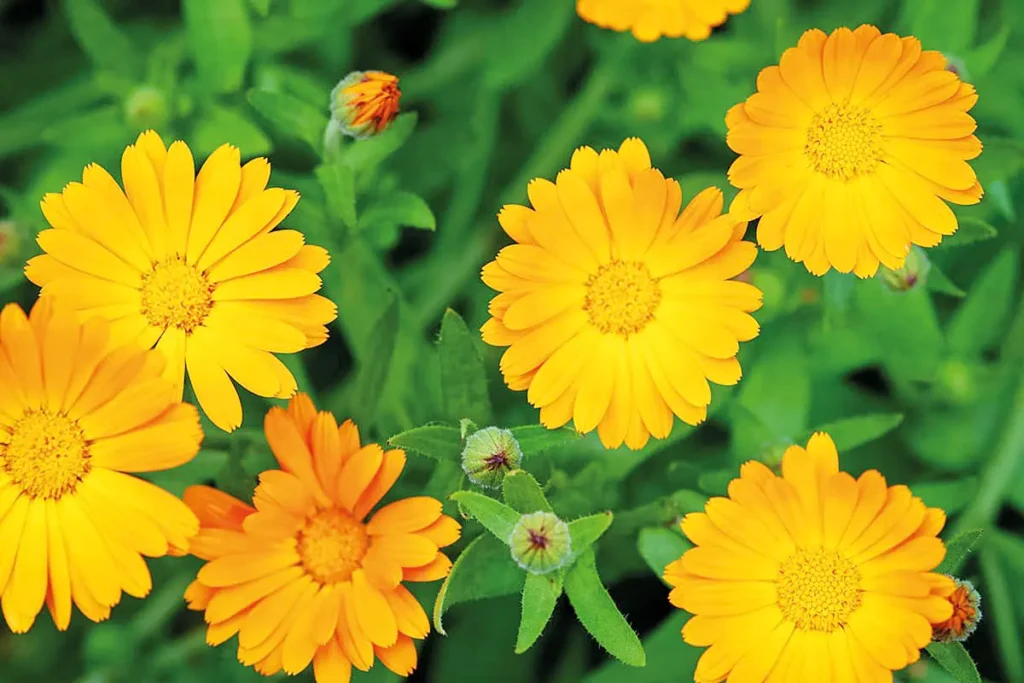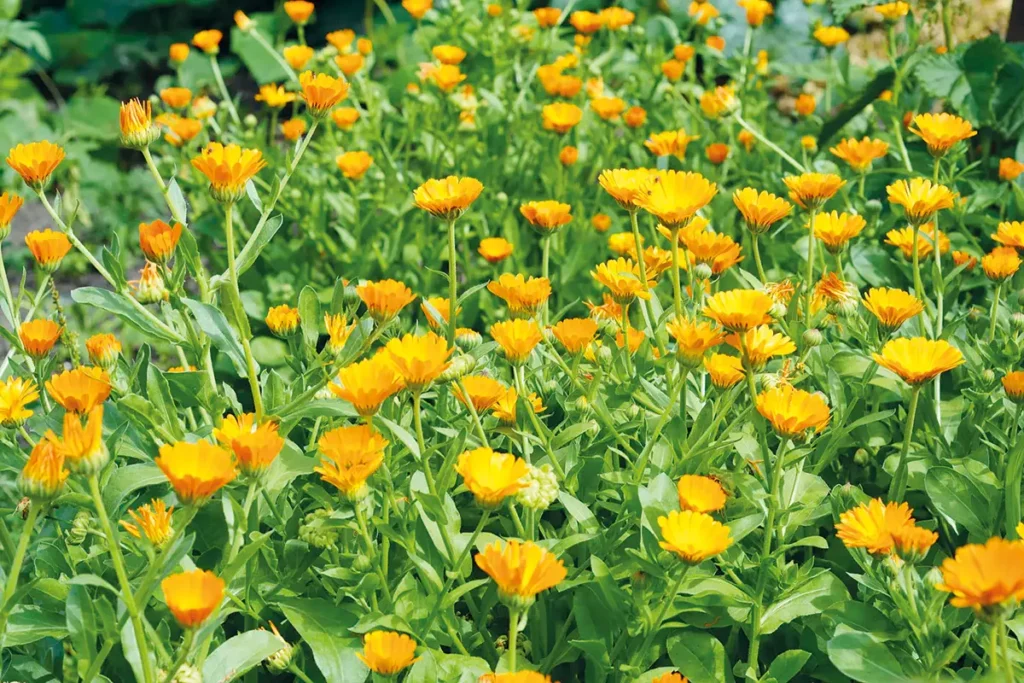


Nome Italiano: Calendula
Nome scientifico: Calendula officinalis L.
Nome Gallurese: Cacarànzu
Descrizione:
La calendula è una pianta erbacea annuale o perenne, alta 20-50 cm, con fusto eretto, striato, vellutato e ramificato, radice fittonante. Le foglie terminali della calendula sono sessili, alterne, intere o poco dentate; quelle basali di color verde-grigiastro, oblunghe, disposte a rosetta. I fiori sono riuniti in grandi capolini, peduncolati, solitari all’apice del caule e dei rami. Sono di color giallo-arancio e dimorfi, quelli centrali sono maschili, tubulari con margine corollino quinquefido; quelli periferici sono femminili, ligulati, più lunghi delle brattee dell’involucro.
Proprietà e usi:
La calendula ha contenuto in beta-carotene. Per uso topico possiede attività antiinfiammatoria, antibatterica, antivirale e immunostimolante, favorendo la guarigione delle ferite con attività cicatrizzante. Molte delle formulazioni in commercio ne sfruttano quindi le proprietà antiinfiammatorie per uso esterno (creme e pomate). È utilizzata nella medicina popolare e in omeopatia da sempre sfruttata per trattare una grande varietà di disturbi.
Curiosità e miti:
La calendula è un fiore ricco di simbologia ed è citata in moltissimi testi antichi. Era considerata una pianta capace di far ringiovanire. In Oriente se ne ornano i templi. La tradizione vuole che, se al mattino i fiori di calendula rimangono chiusi, molto probabilmente pioverà! Oltre che per le sue leggende, la pianta era nota per le sue proprietà terapeutiche, già da tempi lontani; così come ai giorni nostri gli estratti di calendula vengono adoperati come emollienti e per lenire fastidi e irritazioni. In cucina, se freschi, i petali possono essere utilizzati per preparare risotti, aromatizzare il pesce, arricchire creme e salse. Grazie al colore giallo, in passato i fiori di calendula venivano utilizzati come sostituti dello zafferano.

Italian name: Calendula
Scientific name: Calendula officinalis L.
Gallurese name: Cacarànzu
Description:
Marigold is an annual or perennial herbaceous plant, 20-50 cm high, with an erect, striated, velvety, branched stem and taproot. The terminal leaves of the marigold are sessile, alternate, entire or slightly toothed; the basal leaves are greyish-green, oblong, arranged in a rosette.The flowers are grouped in large, stalked, solitary heads at the apex of the caulis and branches. They are yellow-orange and dimorphic, the central ones are male, tubular with a fivefold corolla margin; the peripheral ones are female, ligulate, longer than the involucral bracts.
Properties and uses:
Calendula has beta-carotene content. For topical use it has anti-inflammatory, antibacterial, antiviral and immunostimulant activity, promoting wound healing with cicatrizing activity. Many of the formulations on the market therefore exploit its anti-inflammatory properties for external use (creams and ointments). It has always been used in folk medicine and homeopathy to treat a wide variety of ailments.
Curiosities and myths:
Calendula is a flower rich in symbolism and is mentioned in many ancient texts. It was considered a rejuvenating plant. In the East, temples were adorned with it. Tradition has it that if marigold flowers remain closed in the morning, it will most likely rain! In addition to its legends, the plant was known for its therapeutic properties long ago; just as nowadays, marigold extracts are used as emollients and to soothe annoyances and irritations. In the kitchen, when fresh, the petals can be used to prepare risottos, flavour fish, and enrich creams and sauces. Due to their yellow colour, marigold flowers were once used as a substitute for saffron.
